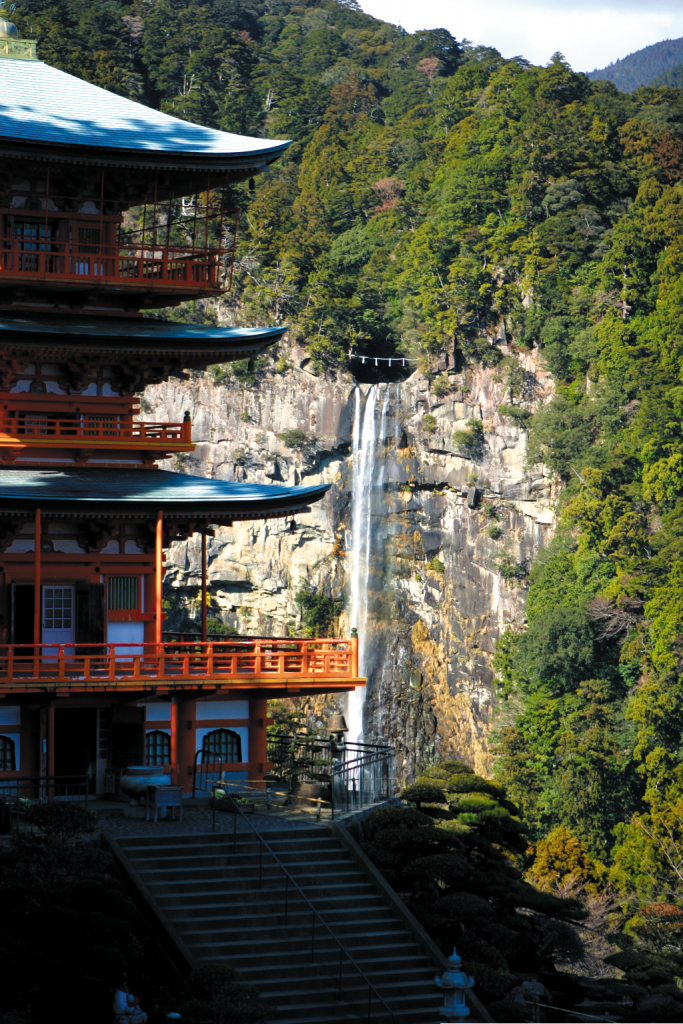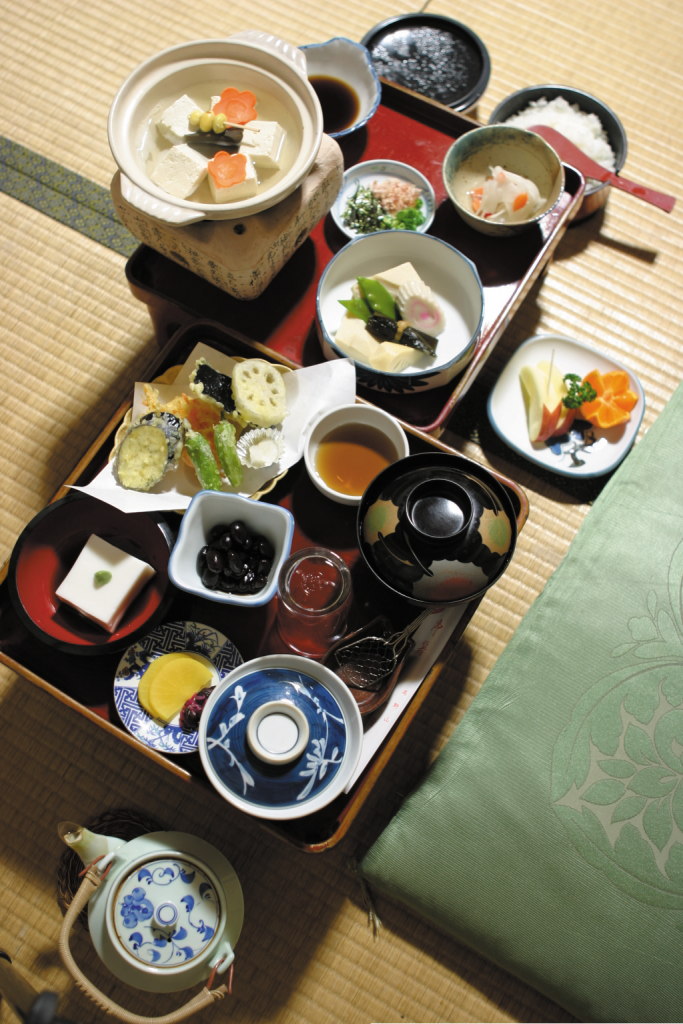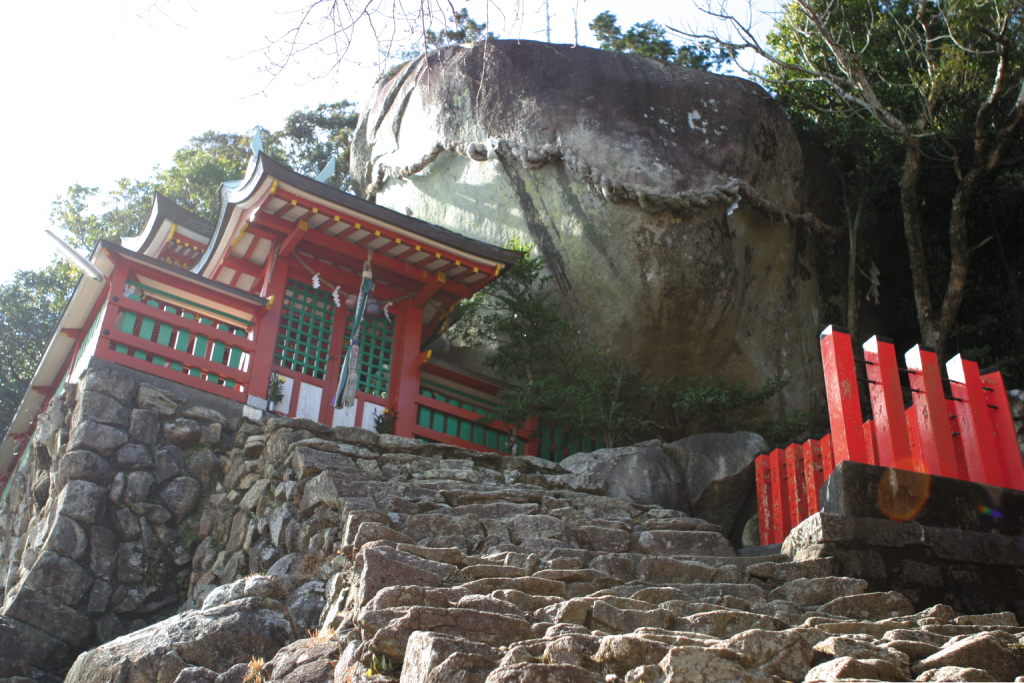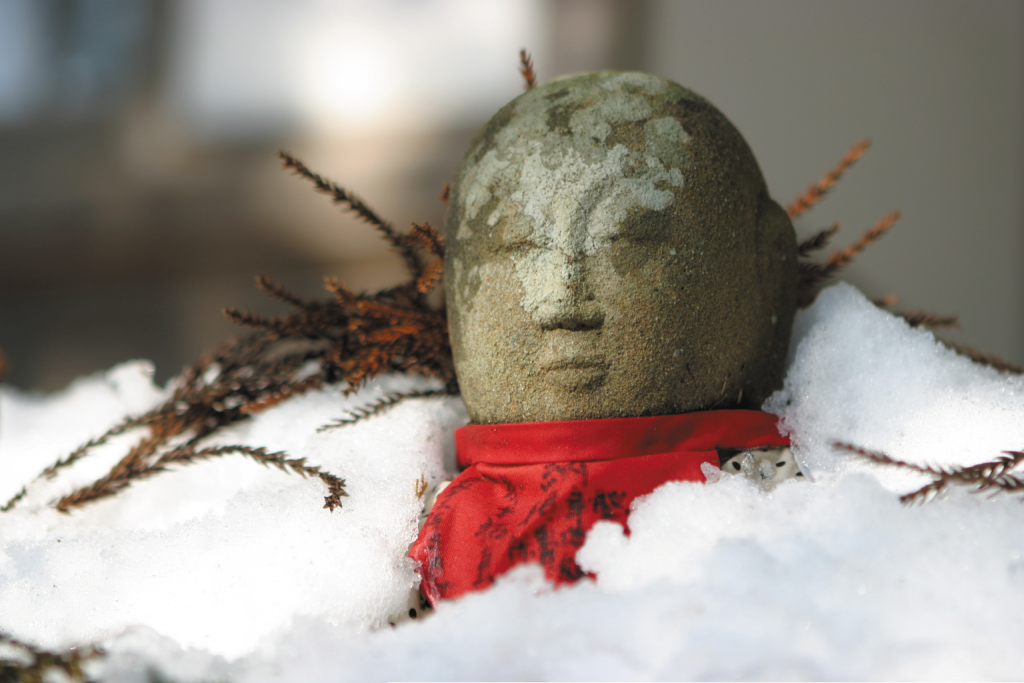The Kii Peninsula spans three prefectures: Mie, Nara and Wakayama, and is home to deep mountains and forests. Religion and culture were born in these lands. While thinking of the people who traveled here more than one thousand years ago, I stepped into the land of gods, a land blessed with an abundance of natural beauty.

“Always in the past, the present and the future…I am thankful for everything around me.”
—Koubou Daishi
The holy place of Shingon esoteric Buddhism
“Hello, I have a reservation here…,” I said to the monk.
“Welcome, please come in. I’ll show you to your room, please make yourself at home” he replied.
At dusk, I arrived at the temple lodging on Mt. Koya, the holy place for Shingon esoteric Buddhism. It was a very clean 12-tatami mat room, and there was a kotatsu in the center. I could tell the room was well-heated as soon as I opened the sliding screen.
“What time would you like to have dinner?”
“How about around 7 p.m.?”
“Sure. The bath is over there. Any time before 10 p.m. And there is a morning service at 6 a.m. tomorrow. Please join if you are not too tired…”

Then the monk quietly vanished. Mt. Koya is a religious place where Koubou Daishi, the founder of Shingon Buddhism, brought this esoteric Buddhism from China and started a training school in 816. Seventeen generations ago my grandfather was a Shingon yamabushi (mountain priest) and my family still belongs to this sect. The area features a main temple along with 117 other temples. Usually children you see on the street have a father who is a monk, and there is even a hospital, post office, fire department and schools. The whole town seems to be related in some way to the temple.
Something unusual about this area is the fact there are no accommodation other than temple lodgings.
Before I came, I was wondering if I would be having a simple meal together with other monks, if the room was heated…if there was a bath…how early the meditation session began? Since I never stayed at such a place, I was excited, but bit anxious.
Reality was completely different from what I imagined. The lodging was very comfortable, and the monks were excellent hosts. During dinner, the vegetarian meal was arranged neatly on a tray and brought to my room. I asked a monk what they eat every day, and he said, “Same as most people, but less meat.” I thought they were not supposed to eat meat at all, but times have changed.
After a long, nice bath, I was relaxing in my room while a monk prepared a futon for me. Somehow I expected to sleep in the same room with other monks; I even handy light for reading, just in case the lights went out early. It turned out I was not going to need it, since I had the room all to myself.

At 5 a.m. the next day I was greeted by a very cold morning. I heard the temperature had gone down to minus five degrees during the night. Monks were already briskly walking around, and at 6 a.m. the morning service started in the main hall. The place was darkly lit with only candles, and the smoke from incense filled the air. Several monks sat in front of the image of Buddha. As the sun rose, the room gradually became brighter and I could see the image of Buddha illuminated in subtle morning light as we started chanting.
The morning was chilly despite the fact a kerosene stove was on. I put my hands together in front of me and closed my eyes. I could feel the chanting echoing in my head.
If you plan to stay at a temple lodging at Mt. Koya, you can make a reservation at the Tourist Information Center. Tel. (0736) 56-2616. English information is available at www.shukubo.jp/eng/.
Narrow road to the center of Kumano

After leaving Mt. Koya, I went south along Route 137 and headed for Kumano Hongu. It was the central place for the Kumano pilgrimage which started in the Muromachi Period (1338-1573). This road is too narrow since it runs between valleys. It usually takes quite a long time to drive, but this sense of distance and the flow of time are unique to Kumano.
I remember what photographer Mutsumi Ishibashi, who I met in Kumano, said to me. “Some writers said that Kumano exists in darkness. This is my favorite description. Kumano is very dark, but the atmosphere is so soothing. There isn’t any good scenery on the Kumano Kodo (old road). Darkness resides among trees, and there is tranquility and moisture in the air. People are attracted to these qualities and definitely feel comfortable in the environment.”
Surely, compared with aesthetic landscapes such as those in Kyoto or Nara, Kumano lacks this classic scenery. However, its own history and culture are floating in the wind, and you cannot find such a place anywhere in Japan.
I finally arrived at my accommodation for the first night, the Yunomine hot spring inn. This is said to be the oldest hot spring lodging in Japan, discovered nearly 1,800 years ago. There are many hot spring inns between the valleys, and you can see strings of steam rising in the distance.
In the Edo Period (1600 – 1867), the Kumano pilgrimage was as popular as the more famous Ise pilgrimage among common people. They visited Yunomine hot springs on the way to Kumano Taisha in order to get rid of physical fatigue and purify their bodies. I thought I might as well follow the old custom to honor the past.
The next morning, after visiting Kumano Hongu, I was late for my reservation so drove fast to Tamaki-guchi along the Kitakami River (a branch of the Kumano River).
“I thought you would never come today,” said Kita-san.
Kita-san is the fourth generation in his family running a boating business. He gave me a hand-made map to prepare for a tour around Doro-kyou. The Doro-kyou tour was a favorite of people after they completed the Kumano pilgrimage. The tour itself takes about 30 to 40 minutes by boat. As soon as the engine stops, the sound of the river echoes among the rocky walls. There are interestingly named rocks everywhere, such as “meoto-iwa” (a rock that looks like a married couple).
Kita-san reminisced, “We did not have the motor before, and two people rowed to Doro-kyo for two hours there and back. There were three other people doing the business, but now we are the only one left.”
At the time when there was no road, the boat business was doing quite well at Tamaki-guchi, carrying commodities between places. To more distant places, people actually walked. Now, the main attraction here is a water jet boat which takes you out for Doro-kyou sightseeing from Shiko. The journey used take three days by row boat, but now it is just one hour each way.
Kita-san said, “I want many people to visit this place, but the road is narrow and there are not enough buses running. However, I do not want the road to be widened. If that happens, it will destroy the original beauty of Kumano.
Narrow roads are spread all over Kumano, and the deep valleys and forests create a dreamlike atmosphere. Just like people of the past, I can feel I am stepping into the original beauty of Kii.
Writer’s Note: Nachi at Kumano Nachi Taisha has nothing to do with Nazism in Germany.




